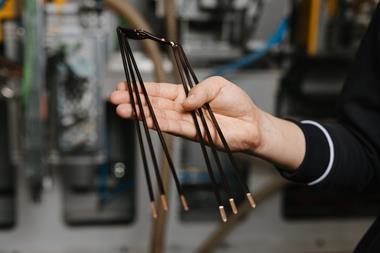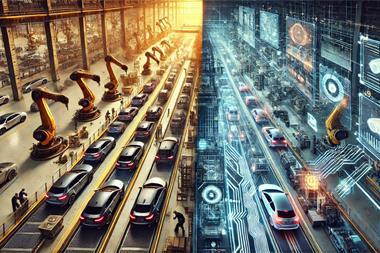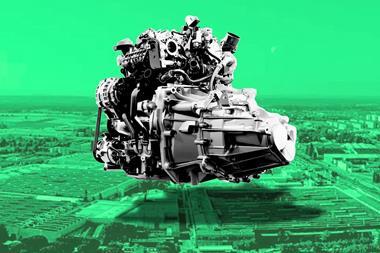Most famous for its hybrids, especially the Prius, Toyota is now widening its focus to battery-electric vehicles
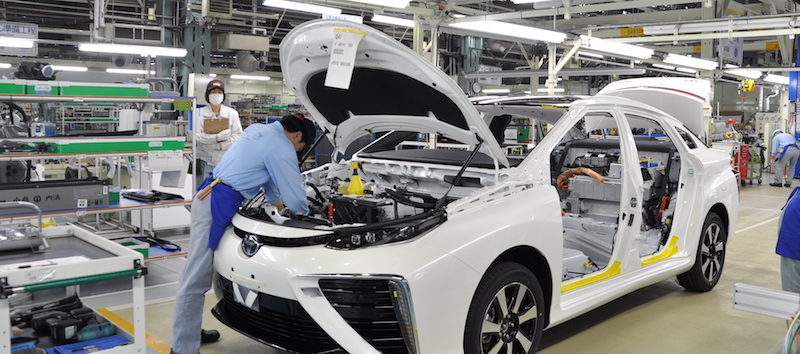 Until relatively recently, Toyota positioned battery electric vehicles (BEVs) as a niche solution for short-range urban mobility. This stance led directly to the launch of models like the i-Road, an ultra-compact electric commuter vehicle, and iQ EV, a converted city car able to travel just 38 miles between charges. Product roadmaps outlined by the company typically squeezed future BEVs into this low-capability corner, with gasoline-electric hybrids (HEVs) and plug-in hybrids (PHEVs) painted as the mainstream choice. Meanwhile, hydrogen-powered fuel cell electric vehicles (FCEVs) were viewed as ideal long-range cars as well as the buses and trucks of the future.
Until relatively recently, Toyota positioned battery electric vehicles (BEVs) as a niche solution for short-range urban mobility. This stance led directly to the launch of models like the i-Road, an ultra-compact electric commuter vehicle, and iQ EV, a converted city car able to travel just 38 miles between charges. Product roadmaps outlined by the company typically squeezed future BEVs into this low-capability corner, with gasoline-electric hybrids (HEVs) and plug-in hybrids (PHEVs) painted as the mainstream choice. Meanwhile, hydrogen-powered fuel cell electric vehicles (FCEVs) were viewed as ideal long-range cars as well as the buses and trucks of the future.
This vision endured until the tail end of 2016, when it was ripped up with the announcement of a new electric car division under the direct leadership of Toyota president and CEO Akio Toyoda. Prius chief engineer Koji Toyoshima was appointed to spearhead the new division’s technical team. The company quickly redrew its Venn diagram of the future to depict BEVs that were no longer corralled in the corner, but were instead spread across Toyota’s passenger car strategy, even edging into the kind of long-range duties previously allotted to hydrogen vehicles. It appeared to be a belated capitulation to the Tesla worldview – that there is no size of road vehicle unsuited to battery propulsion, given a big enough box of cells.

The holistic approachHowever, Toyota’s change of stance is not a complete conversion. Most notably, it rejects the view of Tesla’s CEO, Elon Musk, that fuel cells are “fool cells”. Toyota’s development work on hydrogen propulsion continues, while conventional hybrids also remain a core technology. The OEM recently announced investments of almost $375m to raise hybrid production capacity in the US. Speaking at an investor summit in September 2017, Akio Toyoda explained that he still expects fuel cells to follow hybrid technology from the margins into the mainstream: “We’ve seen hybrid sales rapidly increase in recent years, and we believe that EV and fuel cell technology will follow this same path.”
Toyoda added that the plan is to cover all powertrain bases. “I don’t think every powertrain works for every market,” he observed. “As a country, Japan is committed to a hydrogen future, so for that market, hydrogen-fuel vehicles will become the top powertrain. In the Middle East, where there is plenty of access to gas, gasoline engines or hybrids will be dominant. And in Norway, where it’s easy to make electricity and the government is financially supporting EVs, I predict EVs will be the powertrain of choice.”
China provides another strong motive behind Toyota’s pivot towards BEVs. The country’s government aims to put 5m new-energy vehicles (NEVs) on its roads by 2020, and in December 2017 it revamped the financial and regulatory incentive programme designed to encourage this outcome. The NEV scheme rewards both makers and buyers of BEVs, PHEVs and FCEVs, but notably offers no recognition of HEVs. Toyota built about 100,000 hybrids with locally produced powertrains in China last year, but with no suitable BEV on offer, it has fumbled the NEV opportunity – a mistake it plans to correct. In December, Shigeki Terashi, Toyota executive vice-president and head of EV business planning, said that the company foresees “huge volumes” for its BEVs in China.
Akio Toyoda put numbers on his company’s new ambitions, stating that by 2030, Toyota expects 50% of its sales to be made up of electrified vehicles, which includes HEVs, PHEVs, FCEVs and BEVs. He added that two latter segments, which are zero-emission vehicles, are expected to account for 1m out of 4.5m electrified vehicle sales by that point. Terashi believes that zero-emission powertrains will play a key role in meeting mandatory Corporate Average Fuel Economy (CAFE) targets in the US, as well as similar fleet-average targets in Europe.
However, he also argued that the success of different kinds of EVs will be decided not by environmental regulations or manufacturer goals, but by customers and market forces. EVs made up 52% of the Norwegian market in 2017, Terashi observed, with BEVs accounting for 21% of sales. The country has a per-capita gross domestic product almost twice that of Japan. “An affluent lifestyle is available in Norway,” he stated. “In addition, the abundant power generation by hydro power means they can give preferential treatment to EVs.”
Milestones on the road to its 2030 goals include a recent announcement made in February 2018, when Toyota revealed that it had met its annual EV sales target of 1.5m three years early. Looking ahead, new products will be crucial to continue on an upward trajectory. A mass-produced BEV for China is due to roll out in 2020, followed by at least ten models of Toyota and Lexus BEVs. These will go on sale in Japan, India, the US and Europe by the mid 2020s, and by 2025, the company aims to offer a hybrid option for every model it produces worldwide.
In 2017, Toyota built 1.47m HEVs and about 50,000 PHEVs. It expects these volumes to expand as current hybrid technology is adjusted to cater for every vehicle segment, from sports cars to tow trucks, with cheaper mild hybrid designs coming on stream to cater for price-sensitive emerging markets.
Leveraging long experienceWhile Toyota is best-known for its hybrid cars, it does have some pedigree in BEV development. In 1997, the same year the first Prius hybrid went on sale in Japan, Toyota launched a battery-powered version of its Rav4 SUV in the US. It came equipped with a 27kWh nickel-metal hydride battery, capable of propelling the car for up to 95 miles between charges. Several hundred units were sold, and over a decade later, a second generation was launched that sold a few thousand units between 2012 and 2014. Both heavier and faster than its predecessor, the second electric Rav4 EV offered an EPA-estimated range of 103 miles. It used a 42kWh lithium-ion battery that was supplied by Tesla under a partnership agreement. That relationship began with much fanfare in 2010, but quietly subsided as Toyota’s new EV plan emerged at the end of 2016.
Today, Toyota argues that it has plenty of electric car expertise in-house, earned across the two Rav4 versions, four generations of Prius, two generations of Prius plug-in, and the hydrogen-powered Mirai FCEV. “Electric motors, batteries, inverters, electronic control as well as regenerative braking – these are the technologies we’ve built up to date,” commented Terashi. “PHEV, BEV and FCEV alike can benefit from that foundation.” But internal experience has not stopped Toyota forging a new joint venture (JV) with Mazda and Denso, with the goal of developing a common architecture for EVs. Announced in September, the new company, called EV CA Spirit, will address vehicles of all sizes from city cars to light trucks. Toyota owns 90% of the venture, with Mazda and Denso each taking 5%.
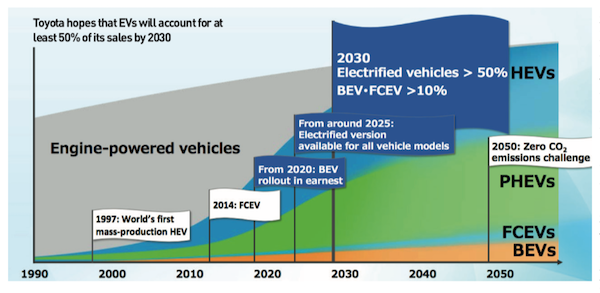 Toyota expects its BEV plans to require ¥1.5 trillion ($13.8 billion) of investment by 2030, with about half of the total earmarked for battery R&D
Toyota expects its BEV plans to require ¥1.5 trillion ($13.8 billion) of investment by 2030, with about half of the total earmarked for battery R&DAll told, Toyota expects its BEV plans to require ¥1.5 trillion ($13.8 billion) of investment by 2030, with about half of the total earmarked for battery R&D. However, Terashi thinks this R&D budget alone is not sufficient. “If you don’t have enough capable people, they can’t spend money wisely,” he warned. Tapping into the shared expertise of partners like Mazda and Denso is obviously helpful when it comes to batteries, and Toyota has also turned to long-standing partner Panasonic, which happens to provide cells to Tesla.
In 1996, prior to the launch of the first Prius, Toyota took a 40% stake in a new battery JV with Panasonic. The carmaker subsequently became the majority owner of the enterprise, now called Primearth EV Energy, which continues to build nickel-metal-hydride batteries for Toyota and Lexus hybrids as well as lithium-ion batteries for Toyota PHEVs. In December, Toyota and Panasonic announced plans to assess a new collaboration to build large-capacity BEV batteries. In particular, the partners want to develop solid-state cell technologies as well as stackable prismatic formats, rather than the cylindrical cells favoured by Tesla.
At a news conference held in Tokyo, Panasonic president Kazuhiro Tsuga said that the cylindrical cells it supplies to Tesla represent the number-one choice for BEVs, but added that opportunities for future growth will likely require a wider variety of cell shapes and formats for different customers. Similarly, Toyota’s Terashi suggested that the anticipated scale of the OEM’s BEV production may require partnerships with other battery suppliers: “Maybe local production with a battery maker in China might create a win-win scenario for both parties.”
While Toyota has trailed far behind Tesla, the Renault-Nissan-Mitsubishi Alliance and BMW in its enthusiasm for BEVs over the past decade, the activities of the last few months illustrate a company keen to make up for lost time. “When it comes to alternative powertrains, it’s not so much about who gets there fast but who makes it the best,” Toyoda mused. He also praised Tesla, suggesting that the company has demonstrated that a BEV can unlock tremendous brand value and passion: “Customers were willing to call it ai-sya, or the vehicle they love.” Whether buyers will clamour for Toyota BEVs with the same enthusiasm remains to be seen, but from 2020, we will start to find out.





























